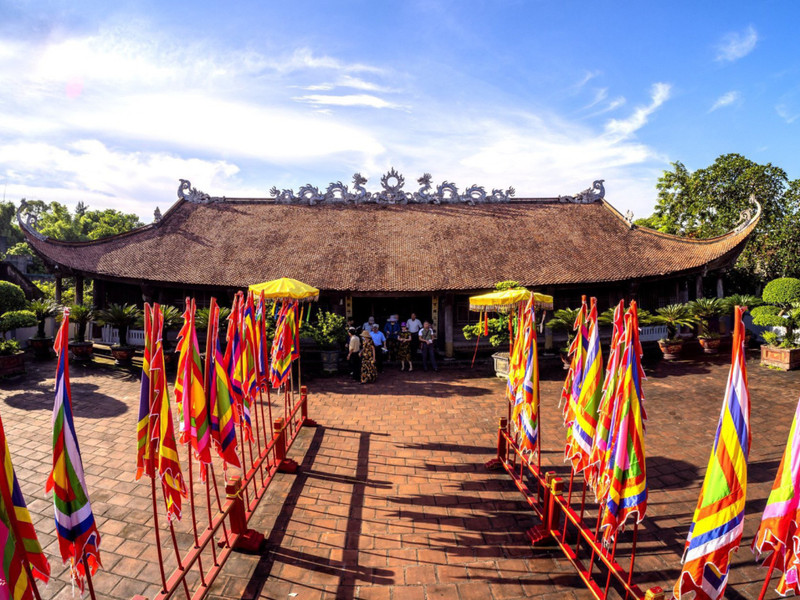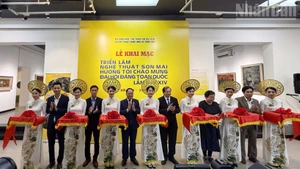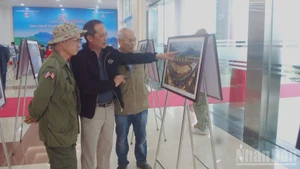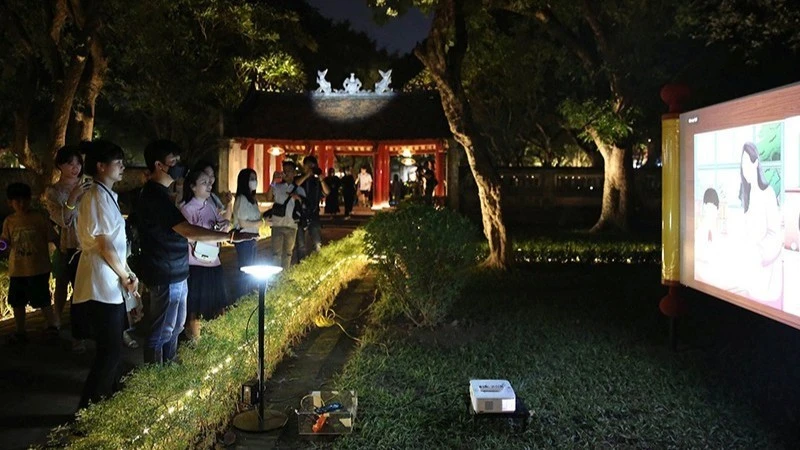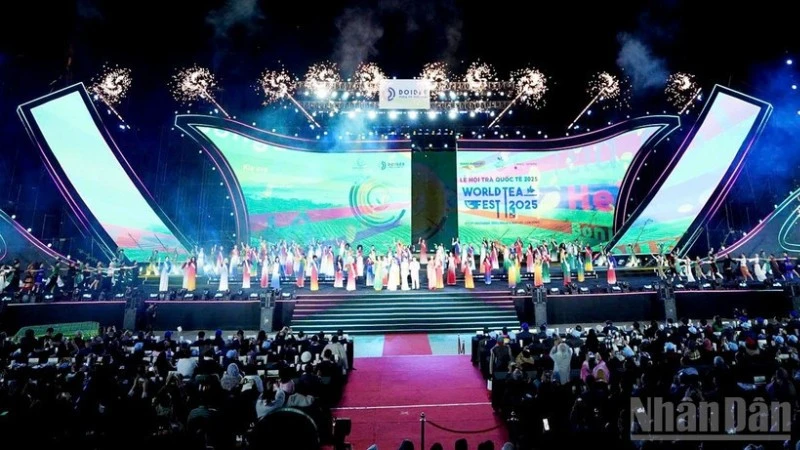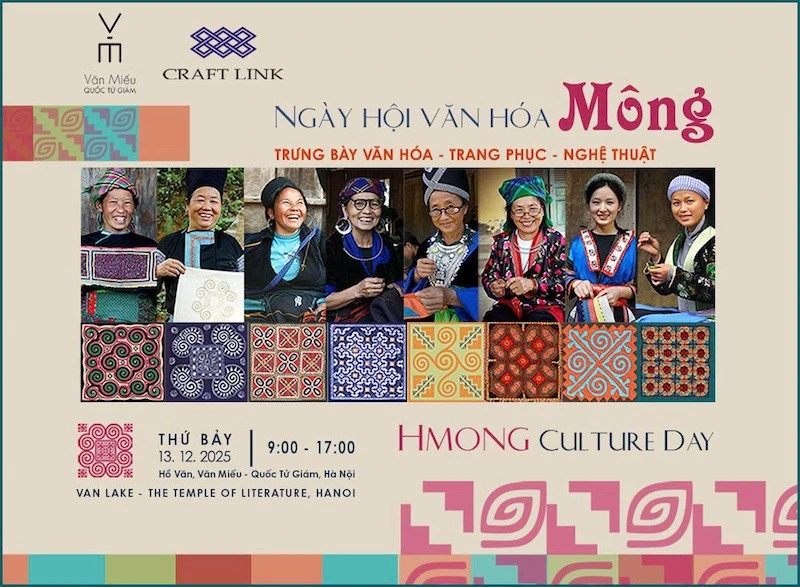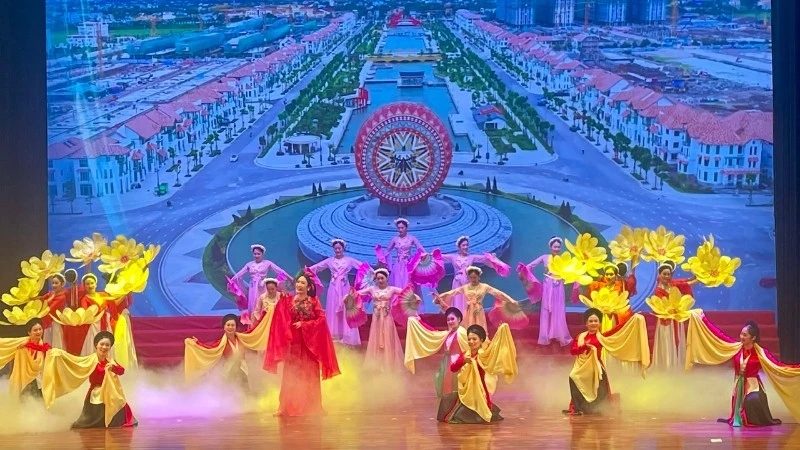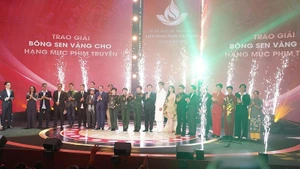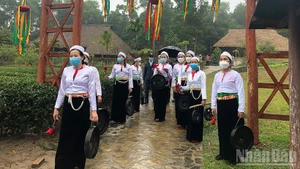According to historical documents, Van Don Commercial Port was established around 1149 under King Ly Anh Tong. However, it was not until the Tran dynasty that this port really developed strongly to become an international trade centre and a key position for national security in the Northeast Sea region. The period of strongest development of the port was from the 13th to 16th centuries.
Over the past 700 years, Van Don Commercial Port has operated as a system of interconnected yards and docks.
The centre of the commercial port is located in an area of 200 square kilometre in Bai Tu Long Bay (in Thang Loi, Quan Lan, Minh Chau and Ngoc Vung Communes of Van Don District).
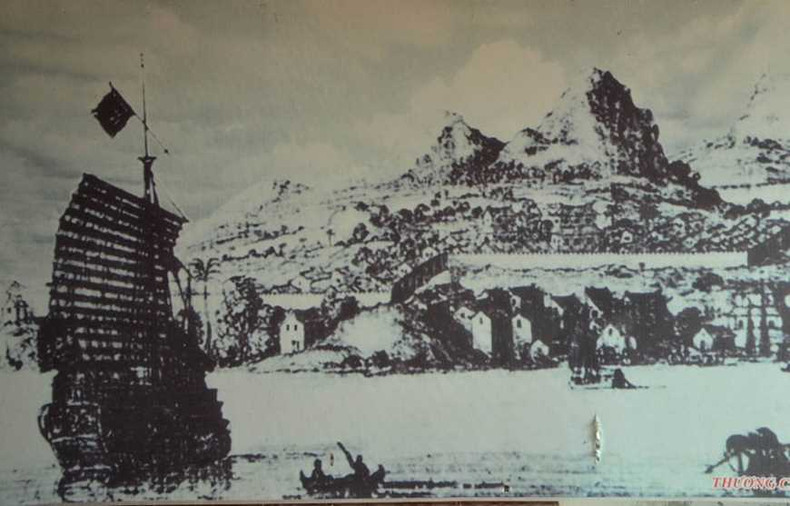 |
| A painting by a Spanish artist which features Cai Lang wharf under Van Don Commercial Port is currently kept at Quan Lan Communal House (in Van Don District). (File photo) |
The Cong Dong – Cong Tay area in Thang Loi Commune was once the centre of Van Don Commercial Port.
Tra Co Communal House is a typical national historical cultural, architectural, and artistic relic site of Mong Cai City. The annual traditional festival held at the communal house from the 30th day of the fifth lunar month to the third day of the sixth lunar month was recognised as a national intangible cultural heritage in 2019.
Under the Decision, the Prime Minister asked Minister of Culture, Sports and Tourism and Chairmen of People’s Committees at all levels in the province to seriously conduct the State-management roles for the relic sites according to the provisions of law on cultural heritage.
Previously, Quang Ninh had six special national relic sites: Ha Long Bay (in the city of the same name), Bach Dang Historical Relic (in Uong Bi City and Quang Yen Town), Yen Tu Historical Relic (in Uong Bi City and Dong Trieu Town), Tran Dynasty Historical Relic (in Dong Trieu Town), Cua Ong Temple (in Cam Pha City and Van Don District), and President Ho Relic Site in Co To Island.
The abovementioned relic sites contain historical and cultural values that highlight Quang Ninh Provincial’s cultural identity and have become attractive destinations for both domestic and foreign tourists.
